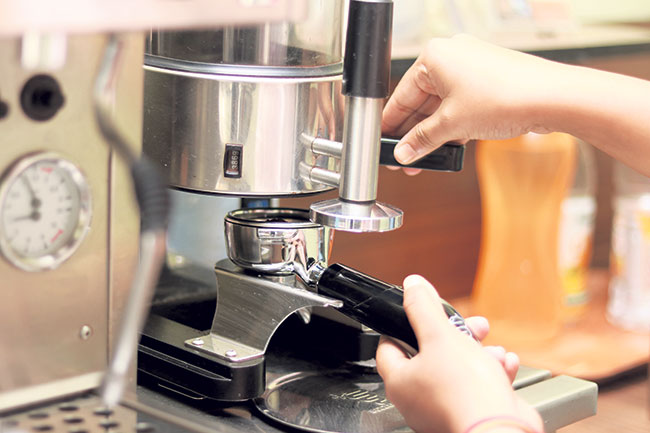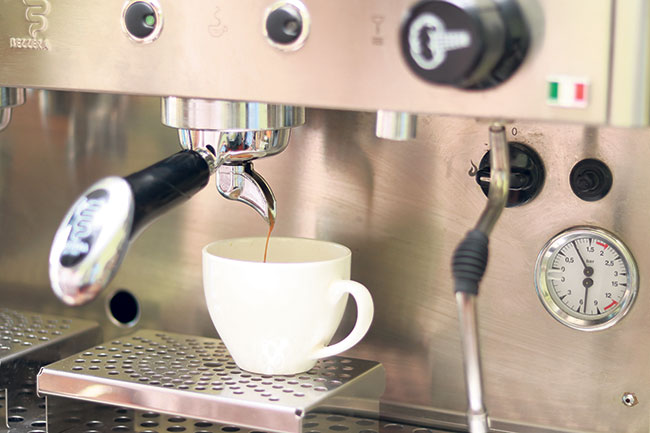Coffee is not just a beverage; it is a trend and an indication of one’s social life. Lately, coffee has become the most preferred drink at social gatherings and formal meetings. With the growing coffee-drinking culture, young population has been inclined toward learning coffee-making in the recent years.
It’s a known fact that hundreds of students fly abroad every year in search of better education and job opportunities. When Nepalis first arrive in foreign lands, they have to undertake some jobs to cover their living and other expenses, and a barista’s job is one of the most on-demand and preferred jobs in foreign countries.
Regardless of one’s plans to go abroad, coffee-making skills definitely add to the personality. Learning to make creative and unique coffee art requires proper guidance and training and there are a number of institutions in Kathmandu that give coffee-making training. And as per the ‘coffee trainers’, it is only common to see people taking the course after they are impressed by the trending latte art videos on the internet.

Make that hair color last

Akash Sherpa, 22, who recently finished his coffee-making training with Kathmandu Coffee, Lazimpat, said he had attended the course for an internship in Dubai. Akash added that the skills he acquired in the training will help him find a well-paid job in the future.
According to Sanjay Giri, a barista trainer at Kathmandu Coffee, it is important for a barista to know the journey of coffee beans from ‘crop to cup’. “If you wish to work as a barista, it is essential that you know the history of coffee and coffee-making. You also need to learn each and every step of coffee-making and how those steps affect the coffee’s taste,” Sanjay said. He also pointed out that the extraction of a perfect espresso is the key to a perfect coffee cup—and it is true for both hot and cold items.
Madhav Devkota, who has been operating the Himalayan Java Coffee School since 2013, also stressed the importance of espresso saying, “A good barista must be able to handle all six levels of calibration for the extraction of a fine espresso. They must know how to grind coffee, what dose of coffee to use, how to tamp coffee in a portafilter before extraction, extraction time/rate, water temperature and know how to use the equipment. It is also important that you take into consideration the oxygen level, moisture, water and pressure as it can change the coffee’s taste,” said Madhav, who is also a trainer of coffee-making.
But, for most Nepalis, coffee is either milk or black coffee. It was like that for Manoj Thapa Magar, 19, until he took barista training with Café Chhéli, Jhamsikhel. After the training, he realized that making a cup of coffee is not about mixing a sachet of Nescafé in hot water/milk, but it is a matter of dedication and precision. He also said he realized that Cappuccino and Latté are indeed completely different in terms of their components, adding that it takes a keen eye to differentiate between the two beverages.

Meanwhile, Manoj’s colleague Sagar Tuladhar, 19, who got training from Barista’s Coffee School, Chaarkhal pointed out that the way he makes flavored coffee is different from Manoj’s even if they work in the same café. “I use chocolate syrup while he uses chocolate powder. Both the favors work well,” Sagar said.
It is natural to have different coffee-making skills based on one’s training. Madhav, who has been working as a barista since 1999, said, “But a cup of cappuccino should taste the same everywhere.”
He added that practice is crucial in coffee-making and there should be no compromise in one’s dedication in order to make a perfect tasting cup of coffee. “Aroma, acidity and flavor of coffee needs to be maintained with each cup. And if one knows the basic of food pairing, it will ultimately result in better customer number.”
Founder of Coffee Cub, Bijulibazaar Chadani Agrawal said, “Training and other courses on coffee-making is expensive. But, the amount spent would mean nothing if you can’t make a cup of coffee that the customers want.”
It is not that coffee-making skill can only be exploited in foreign lands. 18-year-old Seema Shah, who recently completed her training with Himalayan Java, said though the course was a bit expensive, she was completely satisfied with the results.
“Whenever I’m out with my friends, they take my suggestions on which coffee to drink and I get the chance to show off my knowledge.”



































